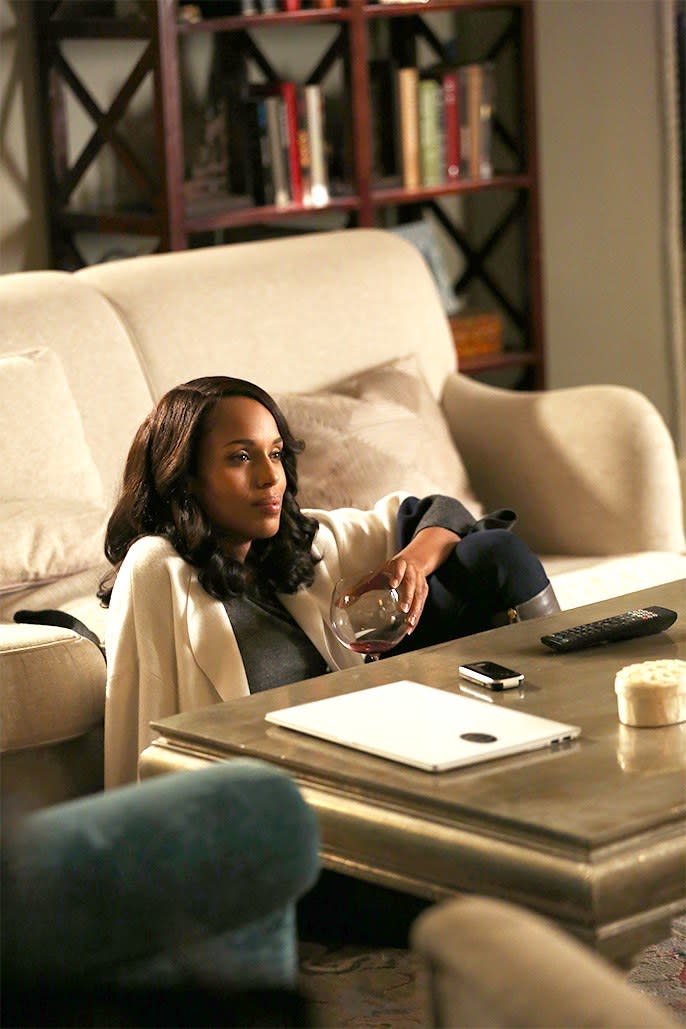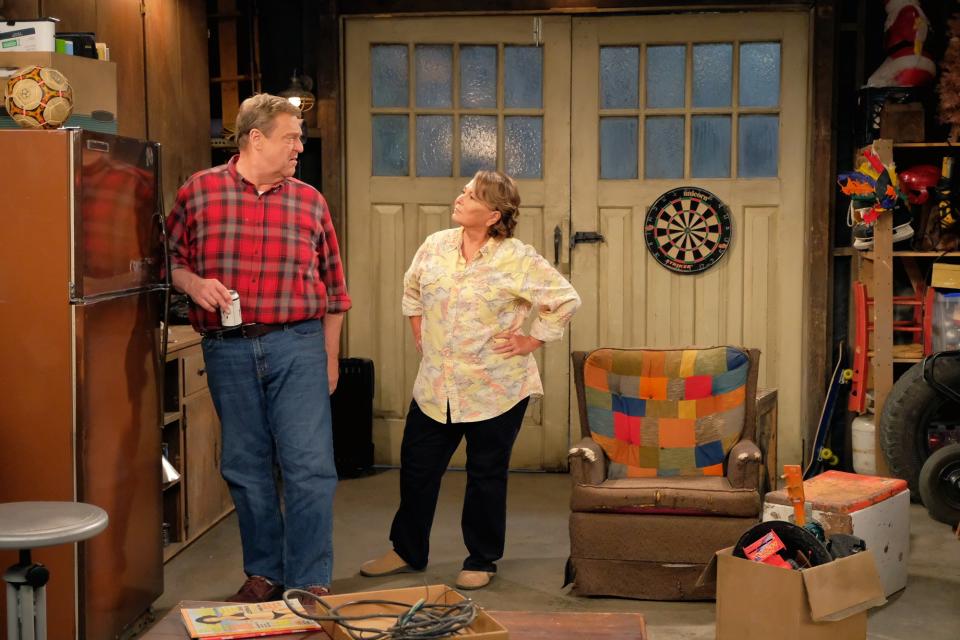Decades Ago, Roseanne Got the Working Class Right. Can It Do the Same in the Age of Trump?
In 1988, Dan Conner made a promise to his wife, Roseanne. “Just think: when you and I are retired, we’re gonna be cruising on the Caribbean on this baby,” he told her as they stood over the wooden skeleton of a sailboat. “We’ll spend our last years together sailing through paradise.”
Like so many of the Conners’ aspirations, Dan’s sailing dreams were never realized. Instead, as the sitcom’s revival on ABC will soon confirm, things have pretty much stayed the same for the Illinois family: the house is still a mess, money is still scarce, and Dan’s hands are still coated in a seemingly permanent splatter of drywall. Like the growing number of Americans who will have to delay retirement, the Conners simply can’t afford such luxuries.
From the very beginning of her eponymous series, which aired in its first incarnation from 1988 to 1997, Roseanne Barr focused on depicting life as it really was for working-class families across America. Her character, a matriarch constantly tasked with keeping her family from teetering over the edge, looked and dressed the way actual blue-collar moms looked and dressed. She was always stretched for time; her meatloaf recipe used store-brand cornflakes as filler; when her daughter Becky collected cans for the school food drive, Roseanne advised her to “tell ’em to drive some of that food over here.” Barr’s series, based on her own stand-up comedy, soon set the standard for the modern working-class sitcom—picking up from giants like Norman Lear, who became a TV legend thanks to series like All in the Family, Sanford and Son, and Good Times.
Even now, ABC S.V.P. of Comedy Jamila Hunter said in a recent phone interview that Roseanne has remained a touchstone for writers: “I would say every year, there was somebody that would come in talking about the impact that the show had on them.” And since the 2016 election—a moment that forced entertainment professionals to realize how out of step their glossy offerings were with the desires of half the country—those conversations have only proliferated.
Mike Royce, who co-created Netflix’s One Day at a Time, adds that networks are getting more interested in these stories as well. “It seems like everybody realized they forgot a lot of people in the country that are not on television in general,” he says. Eileen Heisler, who co-created The Middle—a show that premiered in 2009, long before Donald Trump was taken seriously as a political force—agrees: “There’s been definitely a desire, I think, on the part of the network to return to their working-class roots. A lot of people have taken more interest in our show, where we’ve been doing this for nine years.”
Enter the new Roseanne, a show that might be perfectly engineered to capture the zeitgeist—and lead the way for a new generation of sitcoms made in its image. “The networks want bright and shiny,” Royce says, “and Roseanne really busted that paradigm. She busted it, and then nobody else followed the lead, really. So I think a lot will hinge on her success.”
But the political landscape has also changed since the original Roseanne aired. The accepted current narrative asserts that white working-class voters elected Trump. The truth, of course, is more complicated than that—but while the original Roseanne did not often directly endorse any political party or figure, the revival will be the first network sitcom to center itself around an unabashed Trump supporter: Roseanne Conner, who, like Roseanne Barr, actually did vote for the man who is now president.
Based on the three episodes made available early to critics, the revived series is not completely centered around politics—but thanks to the very vocal Barr’s own political leanings, the conversation surrounding her reborn sitcom has largely centered around its treatment of Trump. And it’s likely that viewers’ response to Roseanne’s politics will determine whether or not the revival maintains the influence of the original.
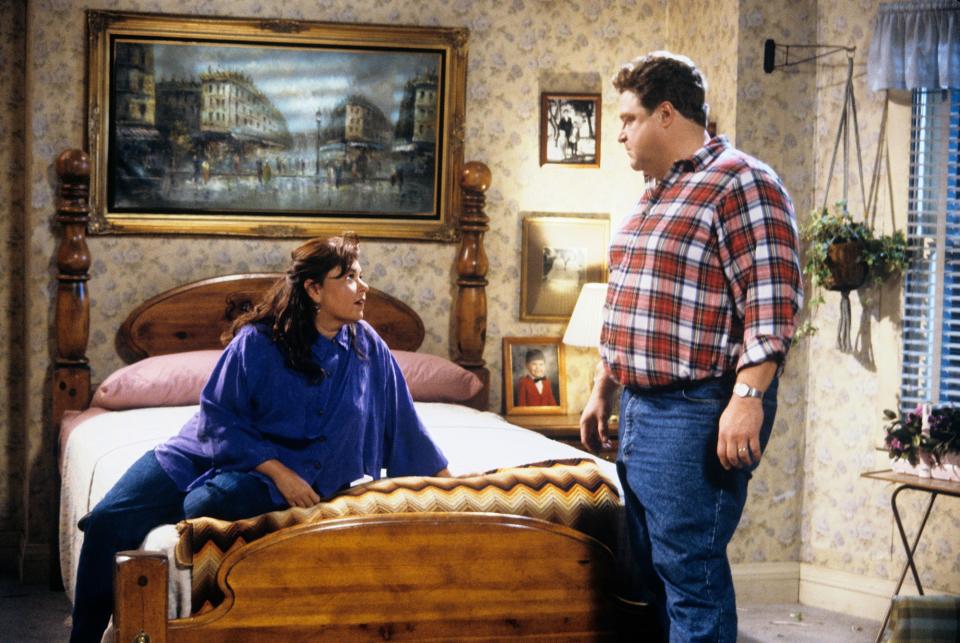
45211_1004-1.jpg
Historically, TV’s portrayal of the working class has not always been flattering. As early as the 1950s, sitcoms like The Honeymooners offered negative portrayals of bumbling working-class men—people whose deflated social status was nobody’s fault but their own, according to the shows on which they starred. As Rider University sociology professor Richard Butsch notes in his essay “Class and Gender Through Seven Decades of American Sitcoms,” the male breadwinners in these shows tend to be classic fools: “He is a buffoon or bungler, often well-meaning and warmhearted, but incompetent, immature, ignorant, irresponsible . . . He is played against his wife and children, who typically are more sensible, competent, mature, and intelligent.”
And then came Roseanne, which revolved around its title character: a mother of three (eventually four) whose odd jobs included factory worker, fast-food worker, shampoo girl, waitress, and diner owner. If anything, her husband, Dan (John Goodman)—who worked in construction and only briefly got to live his dream of owning a motorcycle shop—tended to be the sensible one, while Roseanne was more volatile. It was a complete reversal of the usual formula, which pervaded on concurrent series about down-on-their-luck families like The Simpsons and Married . . . with Children. And while Roseanne never dropped names and political references into its dialogue, unlike contemporaries like like Murphy Brown, it used its characters and the fictional town of Lanford, Illinois, to explore various heated issues, including domestic violence, racism, income inequality, and the general disenfranchisement of the working class.
The show ran for nine successful seasons, winning four Emmys along the way—but though it inspired a few imitators over the years, as Royce notes, no other facsimile has come close to replicating Roseanne’s enduring legacy. Instead, during the 90s, comedies tended to move away from families altogether, focusing instead on young, white urbanites who never had to worry about, say, their electricity being cut off—sitcoms like NBC’s Seinfeld, Friends, and Frasier. After Friends left the airwaves in 2004, the pendulum began to swing back—thanks, perhaps, to the success of shows like Modern Family (about a sprawling clan that never has to worry about money) and The Middle (about a family that does), both of which debuted in 2009. And as the national conversation has begun to focus more frequently on class, TV has begun to reflect that reality—though it takes more than plaid shirts and jokes about the gas bill to make a working-class sitcom truly resonate.
“You’re always looking for people that are writing authentically,” Hunter says. People from the coasts, where writers tend to congregate, are often limited in their understanding of what life is like in, say, Missouri. During pilot season, she keeps an eye out for shallow concepts that simply pit “red-state” views against “blue-state” views, and writers who seem to be “taking one side.” The most successful series, she says, are the ones in which creators are telling their own stories—like Barr was in the original Roseanne.
Both The Middle and One Day at a Time fall into that category. The former, which is currently airing its ninth and final season on ABC, taps into the lives of its creators; Heisler grew up outside of Chicago, while her co-creator DeAnn Heline was born in Indiana and raised in Cincinnati. (Incidentally, Heisler and Heline also wrote two episodes of the original Roseanne: Season 5’s “Looking for Loans in All the Wrong Places” and “War and Peace.”) As Heisler noted, neither she nor Heline grew up exactly like the series’s central family, the Hecks—”but I think that in creating the show, we had a strong desire to honor the Midwest.”
One Day at a Time also taps into the lived experiences of its writers—especially co-creator Gloria Calderon Kellett. “Both of my parents worked, and my grandma lived with us,” Calderon Kellett said. “Money being something that my parents worked hard for was not ever lost on me for a moment . . . My refrigerator growing up did not have Heinz ketchup in it, because you can get that for free at McDonald’s.” Both The Middle and One Day at a Time use markers like slightly messy homes or beat-up cars to convey their central family’s economic situations, just like Roseanne did and does.
The new Roseanne episodes made available to critics include story lines that revolve around Roseanne and Dan’s shrinking insurance coverage, and their daughters’ own financial struggles. Sara Gilbert, who has starred as Darlene since the original series and also executive produces the revival, notes that because the working class remains “grossly under-represented” on television, everyone involved in the new Roseanne was committed to getting the story right. As she puts it, “We wanted to be specific, and we wanted to get it right—and not just tell our Hollywood idea of what we think is happening in the Midwest.” The show’s creative team decided what the Conners would look like in 2018 after an extensive research process, one that included holding focus groups and interviews with actual working-class people in the Conner family’s demographic.
“People who were in Dan and Roseanne’s income bracket, basically, are making less now” than they did in the 1990s, Gilbert points out. “Not even including inflation. They’re just making even less than they were making 20 years ago. So they’re actually in more dire straits, and need television shows to represent that even more than they did then, if that’s possible.” Those audiences will likely appreciate the effort Roseanne made to capture their reality.
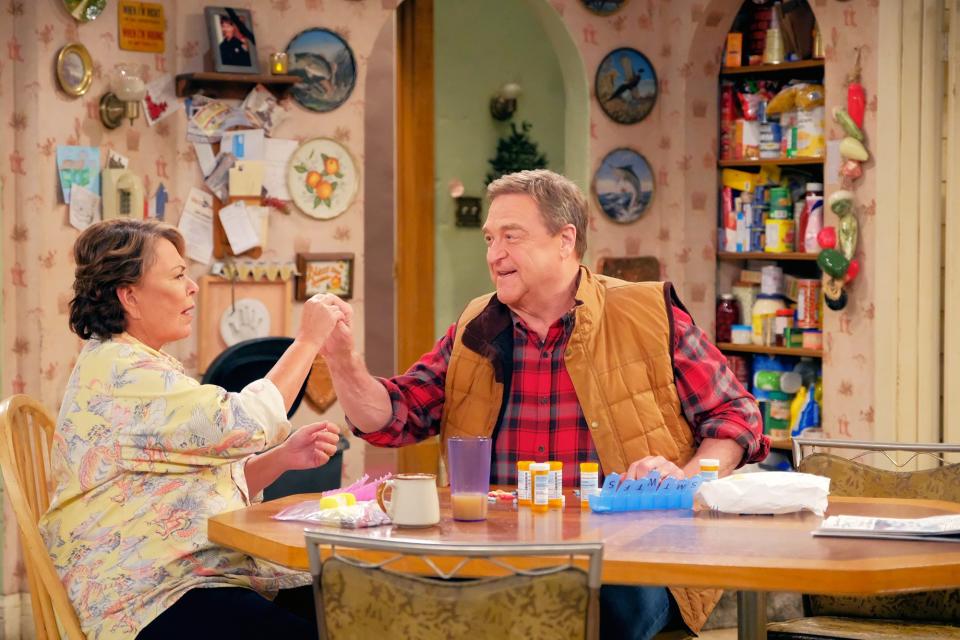
147831_6058
But practically since the Roseanne revival was announced, critics and reporters—including me—haven’t been able to help themselves from zeroing in on one detail: Roseanne Conner voted for Donald Trump, just like Roseanne Barr did in real life. “I’ve always attempted to portray a realistic portrait of the American people and of working-class people. And, in fact, it was working-class people who elected Trump,” Barr said at the Television Critics Association’s winter press tour this past January, setting tongues wagging.
Gilbert has said that the revival is not actually as politically focused as some in the media have made it out to be—and based on its first three episodes, that seems true. After a politically charged premiere centered on the 2016 election and its aftermath, subsequent installments focus instead on what Roseanne always did best: turning the camera toward how economic instability affects the Conner family, and how they respond to the challenges of their limited budget.
Despite all that, Barr’s presence has brought politics to the center of the conversation anyway. In 2012, the Emmy winner ran for president herself under the banner of the left-wing Peace and Freedom Party; in the intervening years, she’s become infamous on the Internet for allying herself with white-nationalist, Hillary Clinton-hating conspiracy theorists.
It might be tough for liberal fans of the old Roseanne to support the new show in light of all this, let alone embrace who Roseanne Conner has become. Then again, there’s also a TV precedent for this predicament. In the 1970s, some critics worried that rough-edged Archie Bunker, the protagonist of All in the Family, would fan the flames of racism. Instead, the character proved to be a helpful force in improving race relations.
Carroll O’Connor played Archie as a ball of contradictions—an unapologetic bigot who still respected people on a person-to-person basis once he got to know them. He was uneducated and prone to malapropisms, but he was also his family’s chief breadwinner, supporting even his liberal son-in-law, who lived with the Bunkers. It would have been easy to offer Archie up as a subject for derisive laughter. Instead, All in the Family creator Norman Lear rooted the character in a very human emotion: fear.
“I think you had no trouble recognizing a real human being, not just that point of view and those attitudes,” Lear says in an interview. “And I think that even if it was subliminal, audiences recognized that this was a guy who was more afraid of progress. He wasn’t a hater; he didn’t hate anybody or anything. He was simply afraid of what was around the corner.”
That humanity is what keeps All in the Family resonant—and perhaps now, more than ever, having an Archie Bunker type on TV could help the industry tell the stories of a divided America without punching down. “I think it would work because I don’t think people have changed,” says Lear. “The audience is the same audience it was in the 70s—same human beings with the same frailties, same problems, same needs.”
Calderon Kellett, who works with Lear on One Day at a Time, thinks a well-executed, Archie Bunker-like character would be a particularly fascinating prospect right now—if done right. “There is such an alchemy to writing and casting,” she says. “Norman not only had such an incredible character in his mind, [a] lens with which to tell the stories, but he had Carroll O’Connor . . . Can that magic be captured again? I hope so, because I think it’s interesting and would be great right now. But it would require some special magic, for sure.”
Which brings us back to Roseanne. Unlike Lear and O’Connor, who created a character they themselves vehemently disagreed with, Roseanne Barr is playing one who seems to mimic her own beliefs. Worried viewers should, however, be encouraged by a detail that has occasionally been misconstrued by the press: Roseanne herself is the only Roseanne character on record as having cast a ballot for Trump. On the show, as Gilbert points out, the way Dan voted is never discussed. “We have this theory,” she adds, “that maybe he didn’t even vote, you know?”
This, perhaps more than anything, is the clearest sign that the new Roseanne is committed to exploring how characters like the Conners would think and feel in real life, rather than trying to promote an agenda—which is precisely what the revived series needs to do if it hopes to ape the success of the original. Recently, Goodman was asked whether he thought there would be interest in a tenth season of Roseanne if Clinton had been elected. His response was telling: “The family is still sunk no matter who gets in [the White House].”
TV’s Most Memorable Couches

The Big Orange Couch, Nickelodeon
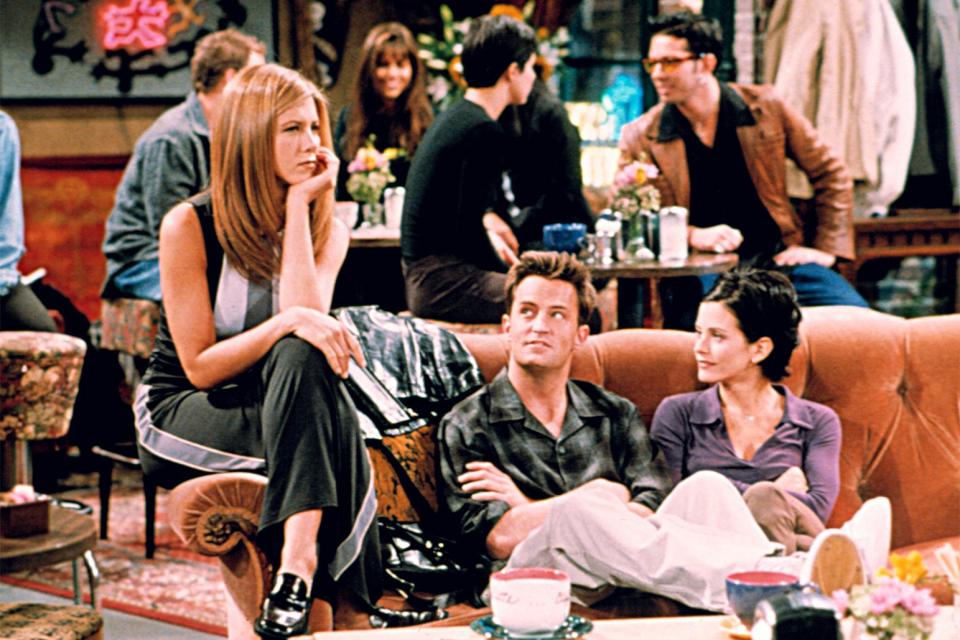
The Couch at Central Perk, Friends
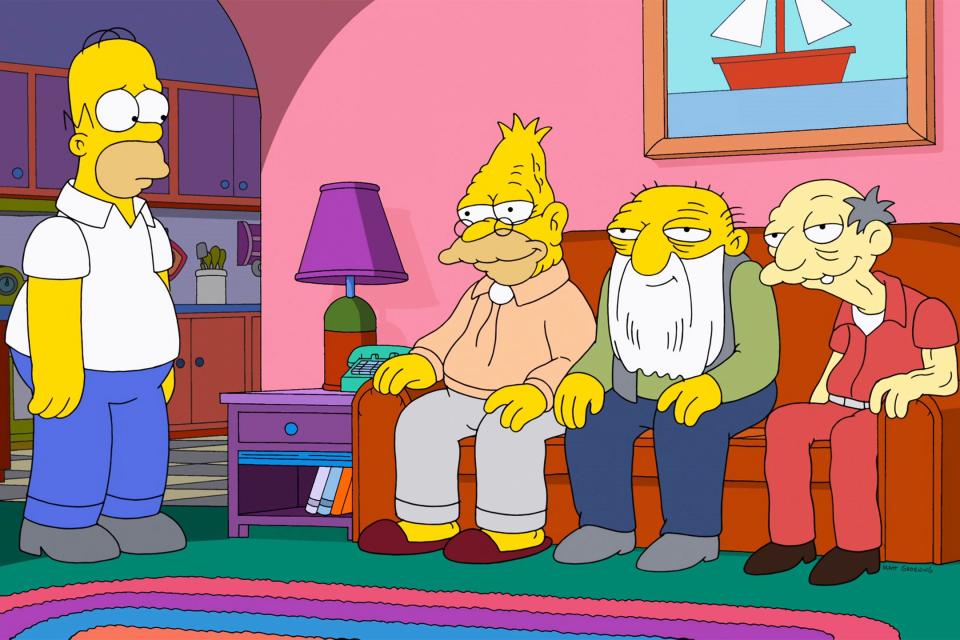
The Simpson Family’s Couch, The Simpsons
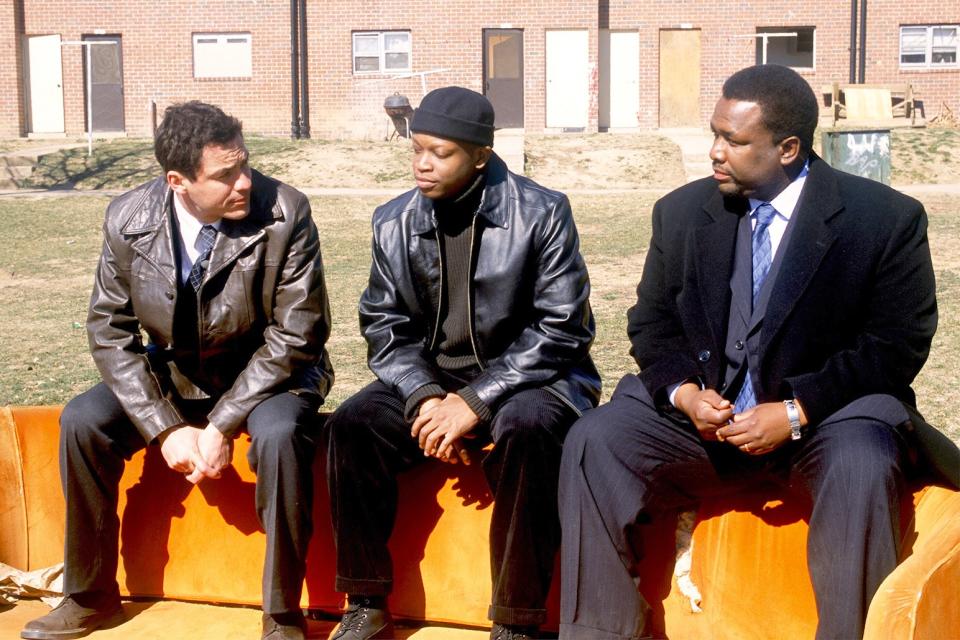
D’Angelo Barksdale’s Orange Sofa, The Wire
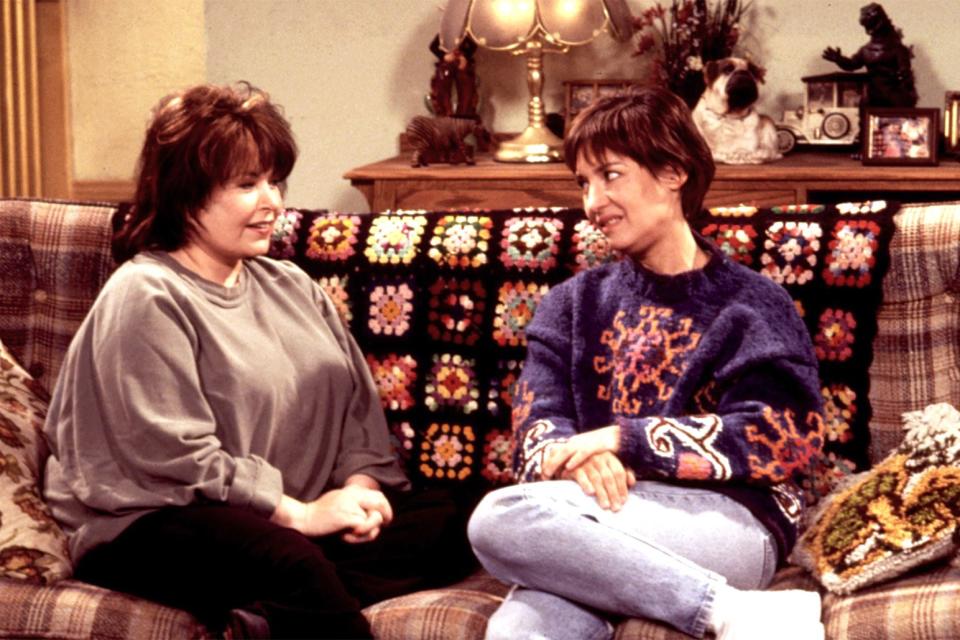
The Conner Family’s Couch, Roseanne
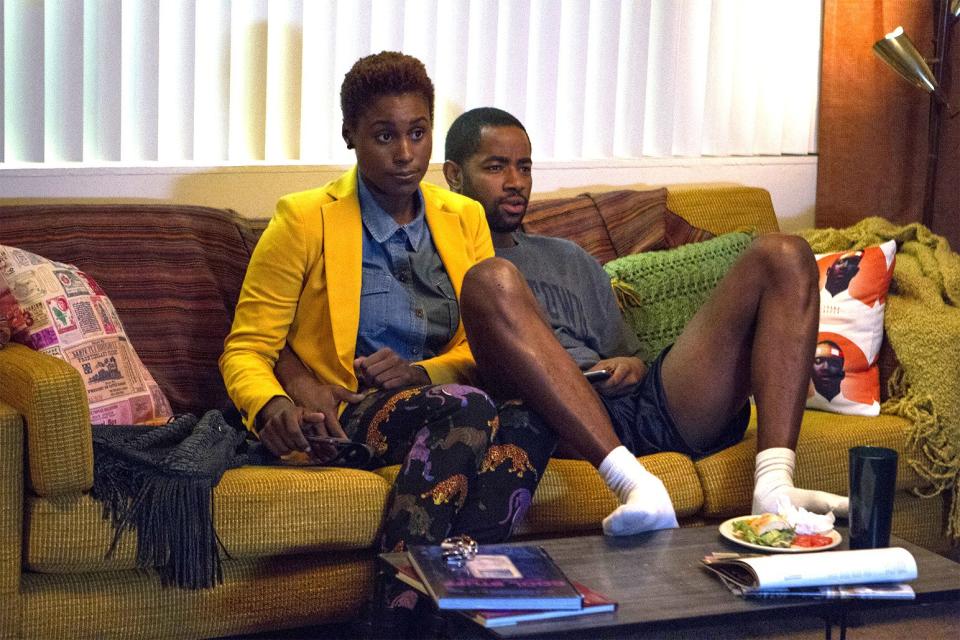
Issa’s Old Couch, Insecure
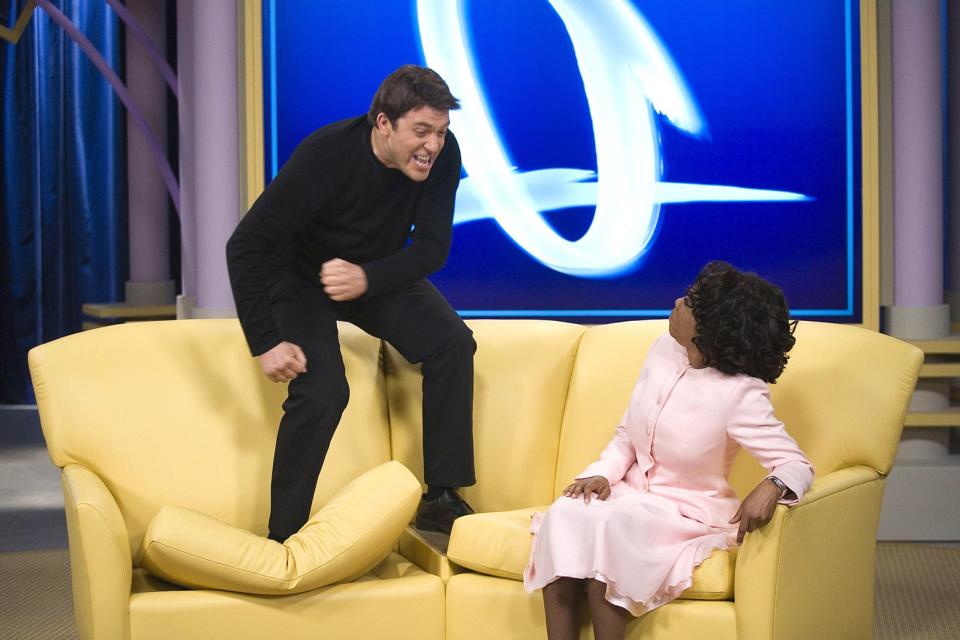
Oprah’s Yellow Couch, The Oprah Winfrey Show
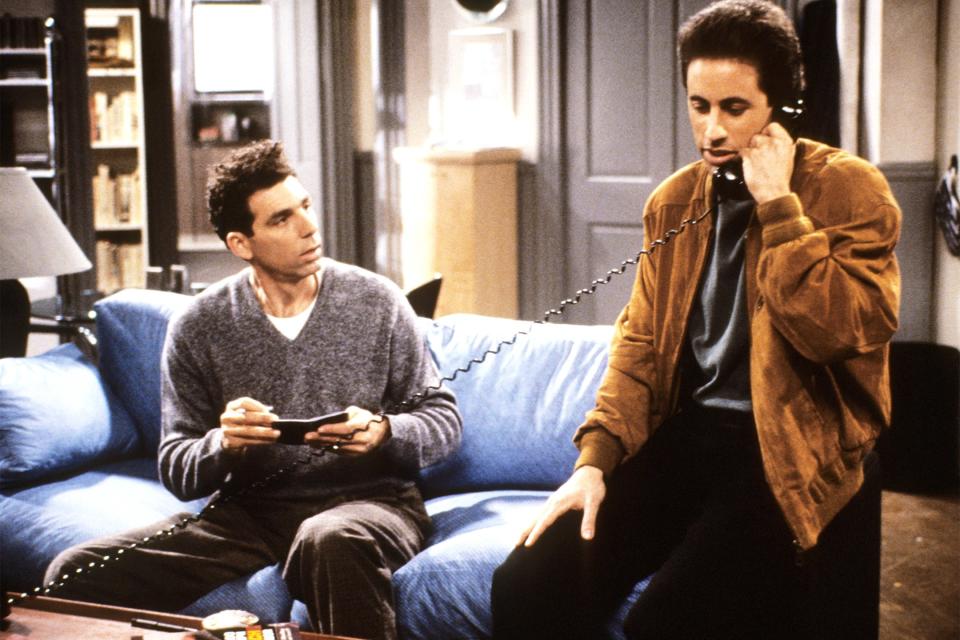
“The Couch,” Seinfeld
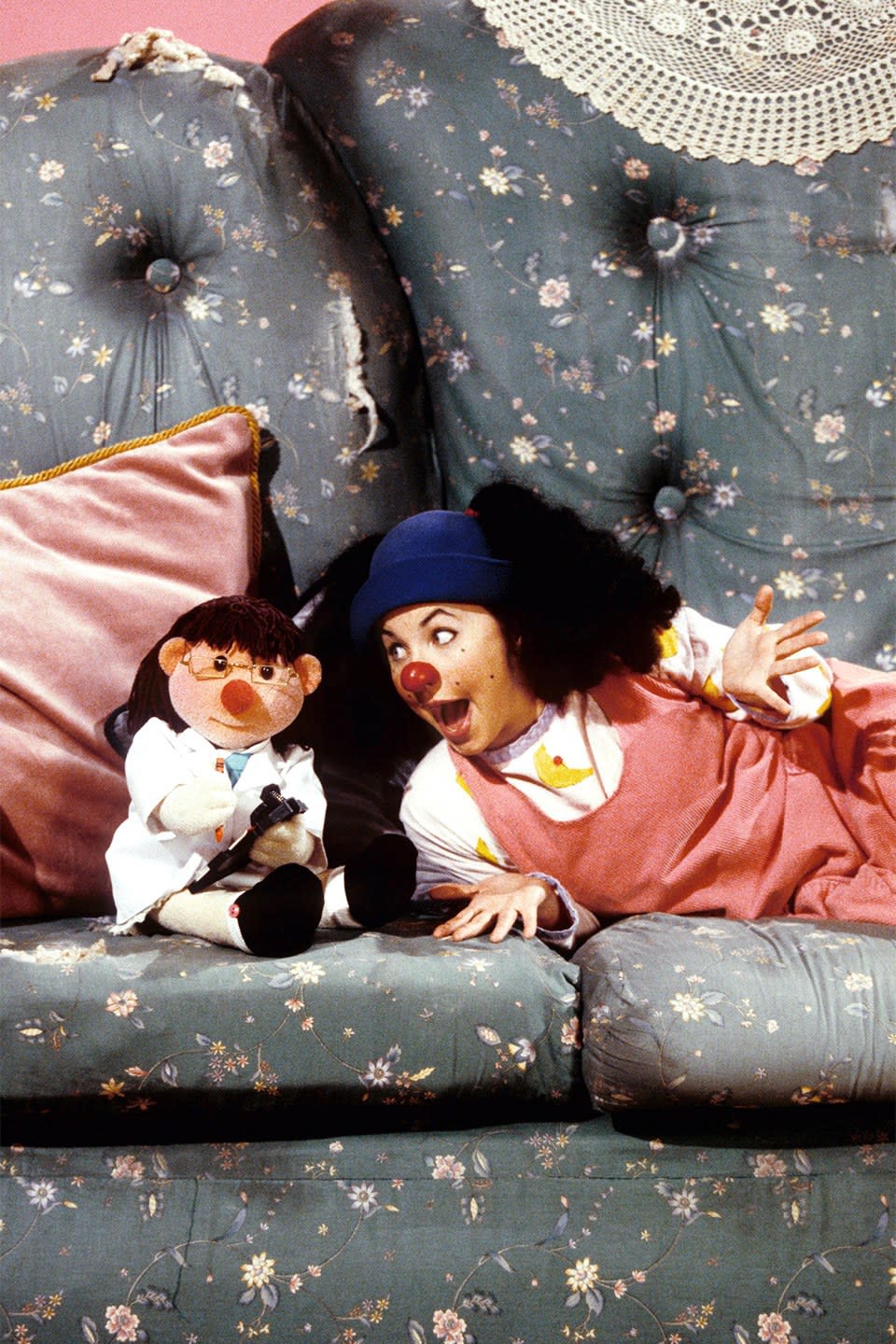
The Big Comfy Couch, The Big Comfy Couch
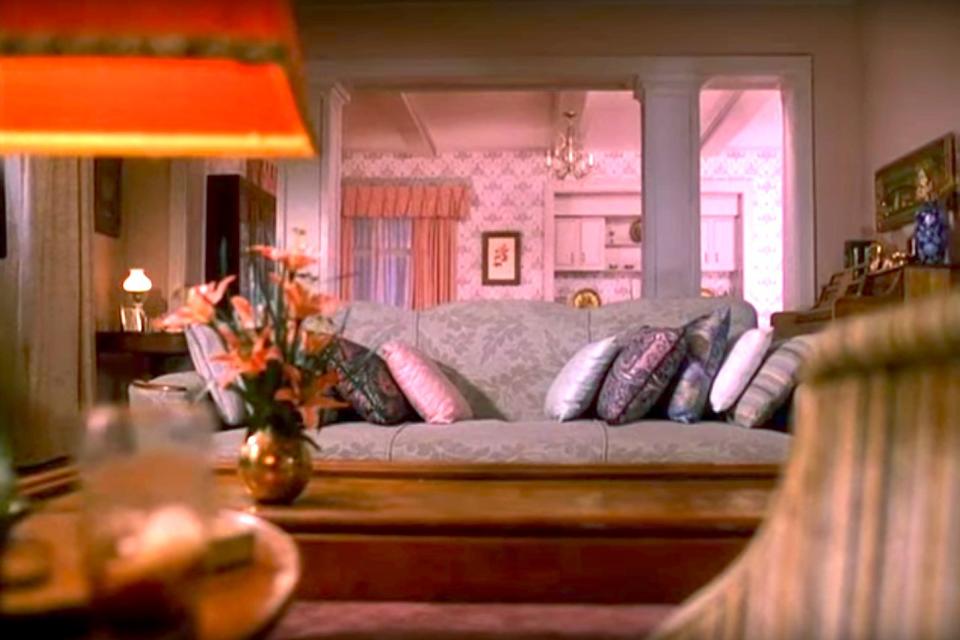
The Palmer Family’s Couch, Twin Peaks
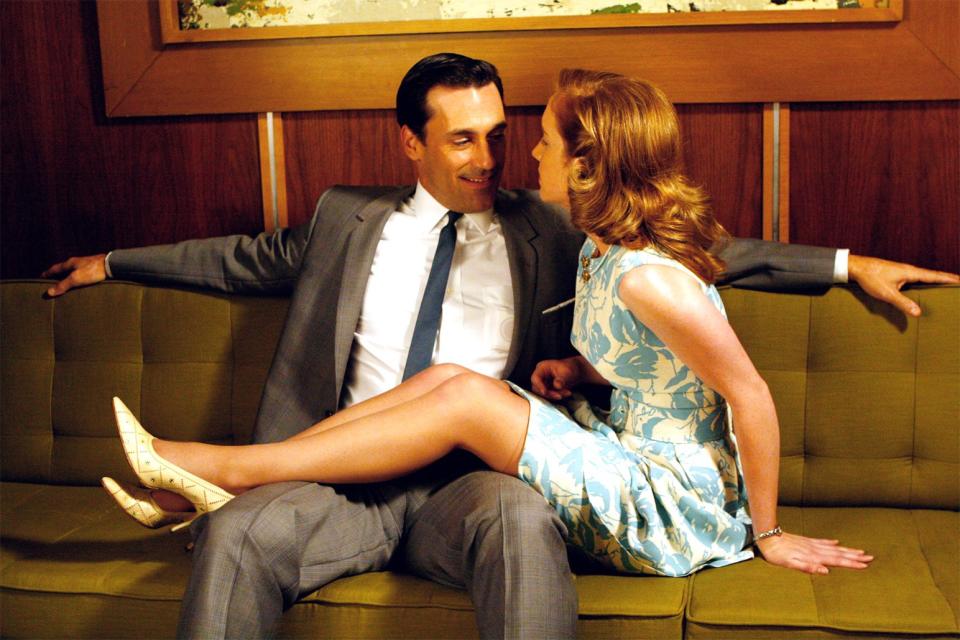
Don’s Office Couch, Mad Men
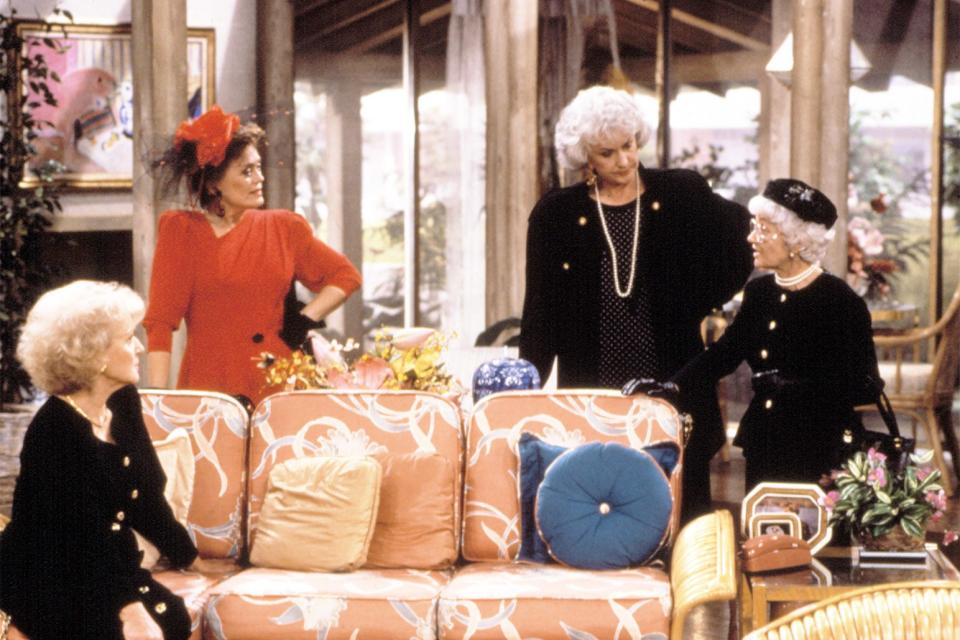
Blanche, Rose, Dorothy, and Sophia’s Couch, The Golden Girls
